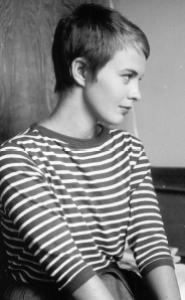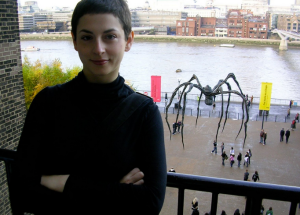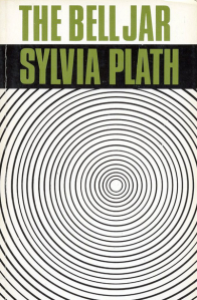The analogies between The Bell Jar and Green Girl are undeniable. To start from an obvious standpoint, you have the fact that the main character in The Bell Jar is named Esther and the main character in Green Girl is named Ruth–both monikers are the only female names in the Old Testament that feature their own books. Moreover, Esther’s last name is Greenwood, making her, in many ways, the ultimate green girl. The very term itself is supposed to infer youth and naïveté, but, more than that, a green girl is this sort of non-person, just waiting for someone to mold her and tell her how to be. What, in large part, separates the two novels is the mode of narration. Where Esther is the narrator of her own woeful existence, Ruth’s story is told from the omniscient perspective of a female narrator who seems to vacillate between loving and hating her.
In many ways, Ruth is perhaps a more pathetic character than Esther in that she doesn’t even have the ability to talk about her own experiences subjectively. The supposed objectivity of Ruth’s narrator serves only to make her come across as more helpless and insecure. Further, Esther and Ruth both share the trait of inhabiting overwhelming metropolises–New York and London, respectively. However, in Ruth’s case, she is not being groomed for any sort of profession, but merely contented to eke out a living as a perfume girl at a department store she calls Horrids (a.k.a. Harrods). Author Kate Zambreno, too, worked in a store called Foyles Bookshop, undoubtedly an experience that illuminated the horrors of retail for her.
The autobiographical element of each novel also serves to punctuate an intense level of veracity. Plath worked at a magazine just as her protagonist and suffered a mental breakdown beyond her control–just as Zambreno endured her brief fate as a shopgirl. Ruth’s status as a pauper is negated solely by her beauty, which she is often times incapable of using to her advantage. Instead, her friend and roommate, Agnes, is the girl who gets all the attention showered over her. Esther endures a similar plight whenever she goes out with her friend and fellow Ladies’ Day intern, Doreen.

Ruth’s desire to make herself into the gamines and heroines she loves from French New Wave films elucidates a need to be someone–without actually being herself. Part of this lack of interest in cultivating her own personality stems from the unwanted knowledge of being inadequate. And, by embracing one’s inadequacy instead of bothering to attempt overcoming it and then failing, she is allowed the privilege of misery and disdain. Esther’s depression, in fact, is revealed in the admission, “The trouble was, I had been inadequate all along, I simply hadn’t thought about it.” Ruth, likewise, does not think about it, but knows it to be true. If she thought about it for too long, however, she would never be able to keep her emotions at bay. And emotionlessness is key to her very survival. Perhaps this is one of the reasons behind Ruth’s love of sleep as she states, “To sleep is to choose neither life nor death.”

Like Esther, Ruth also has the necessary skill of “going dead inside.” It is what she does when she doesn’t want to address what’s happening to her or around her. The time she spent working in a London sex shop highlights this skill especially:
“Ruth had liked the idea of working in a sex shop, the vulgar aspect of it. She liked to slum to place herself in humiliating circumstances. She didn’t know why.”
At the core of the why is Ruth’s subconscious need to shock herself into some form of reality, as her numbness generally makes this an impossible feat.
Esther and Ruth are cut from the same doleful cloth. Neither of them have the will to live a life deemed societally acceptable, for, as Esther notes, “To the person in the bell jar, blank and stopped as a dead baby, the world itself is a bad dream.” Ruth’s narrator elaborates on this form of melancholic ennui by affirming, “And one learns not to care. One learns to deaden oneself and to hold one’s breath and wait until it’s all done with. This is Ruth’s philosophy for many aspects of her life.”
Then there is the feministic facets of The Bell Jar and Green Girl to consider. Both Esther and Ruth are forced to undergo the ills of being an attractive woman–seen as a thing of beauty meant to please, and nothing else. Ruth’s narrator encapsulates it best in describing, “A realization–everyone in Central London is a tourist. You can tell by the uncertainty in their eyes. But Ruth is used to being a tourist. Being a girl is like always being a tourist, always conscious of yourself, always seeing yourself as if from the outside.” And maybe this is the great linking element between Esther and Ruth. Neither of them can escape themselves for as long as they would like to, try as they might through suicide attempts and drastic haircuts.






















[…] the video, there is a mysterious green girl, which one could almost interpret in Kate Zambreno terms, who writhes about along with a few other errant dancers in a huge open space. Everyone who […]